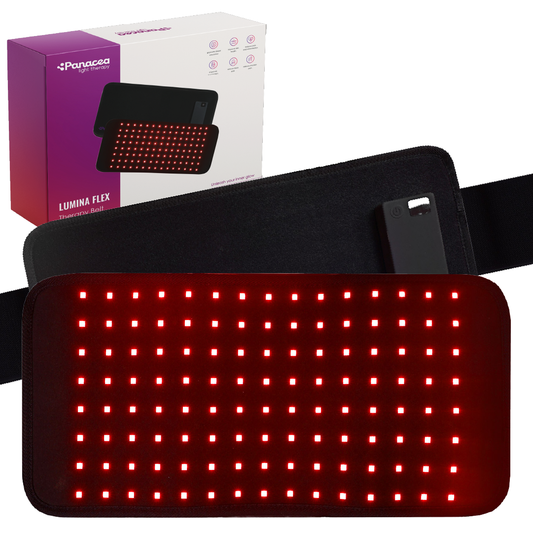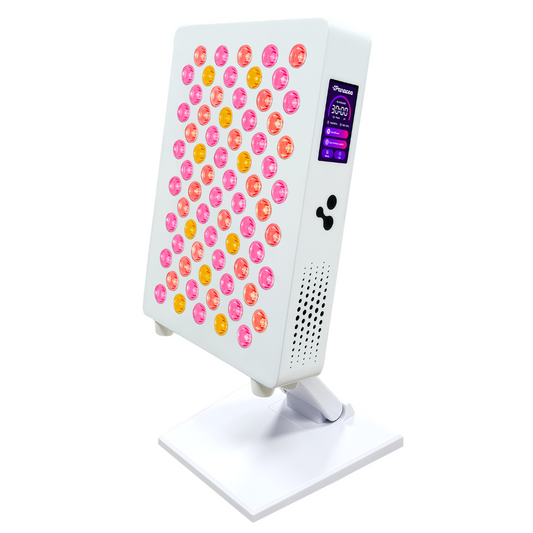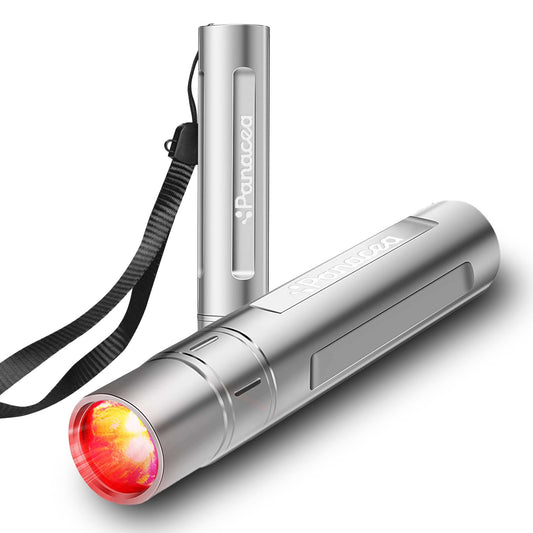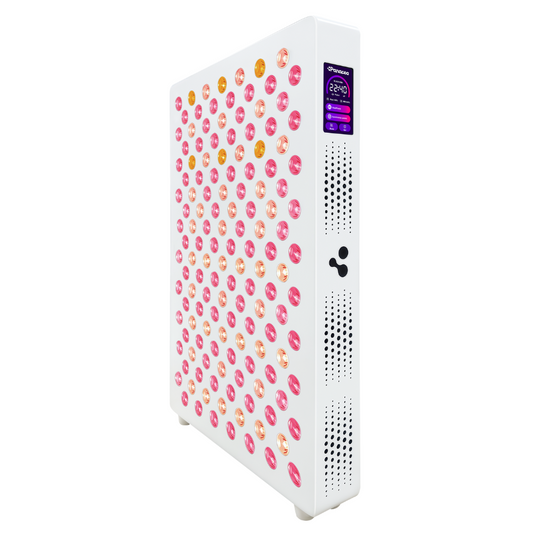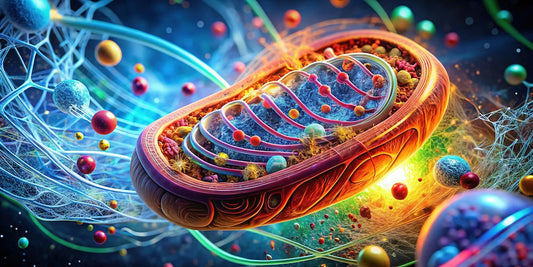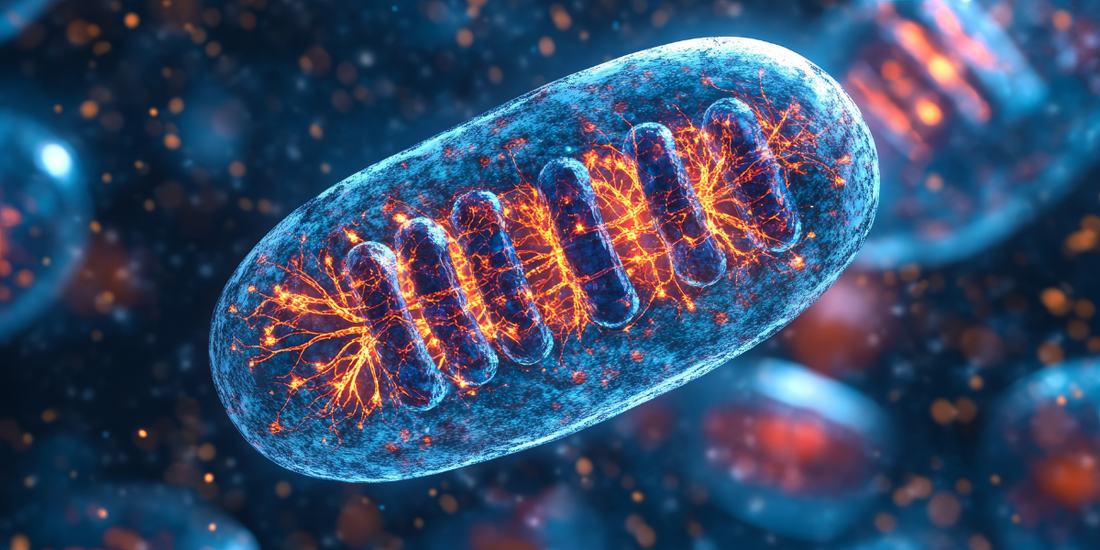
Mitochondria and ATP: The Powerhouses of the Human Body and the Impact of Light Therapy
Share
Mitochondria are the powerhouses of our cells and play a crucial role in the body’s energy production. Without properly functioning mitochondria, our cells would not have the energy to survive. A key factor in this process is ATP (adenosine triphosphate), the primary energy carrier in our body. Recent research shows that red light therapy (photobiomodulation) can have a beneficial effect on mitochondrial function and ATP production. But how does that work exactly?
In this extensive explanation we will discuss:
- How Mitochondria Produce ATP
- Why ATP is so important to the body
- How red and near-infrared light affect mitochondria
- The scientific basis behind light therapy and mitochondrial stimulation
What is ATP and why is it important?
ATP (adenosine triphosphate) is a molecule that is considered the universal energy currency of the body . Virtually all biological processes, such as muscle contraction, nerve conduction, enzyme activity, and cell growth, require energy, and that energy is provided by ATP.
When a cell needs energy, it breaks down ATP into ADP (adenosine diphosphate) and a phosphate molecule , releasing energy that can be used directly by the cell. Mitochondria recycle ADP back into ATP by storing energy from nutrients. This process, known as oxidative phosphorylation , is essential for cell survival and function.
How Mitochondria Make ATP: A Step-by-Step Explanation
1. Glycolysis (first step in ATP production)
Energy production begins in the cytoplasm of the cell, where glucose is broken down into pyruvate. This process is called glycolysis and yields a small amount of ATP.
- Key point: Glycolysis can occur without oxygen, but produces much less ATP than mitochondrial processes.
2. The Citric Acid Cycle (Krebs Cycle)
The pyruvate produced from glycolysis is then transported to the mitochondria, where it is converted to acetyl-CoA . This molecule enters the citric acid cycle (also called the Krebs cycle).
- During this cycle , electrons and protons are extracted and transferred to the electron transport chain.
- This process generates energy-rich molecules such as NADH and FADH₂ , which are needed for the next step.
3. The Electron Transport Chain: Where ATP is Actually Made
The electron transport chain (ETC) is located in the inner membrane of mitochondria and is the most efficient way cells produce ATP.
- Electrons from NADH and FADH₂ are transported by a series of proteins in the ETK.
- This transport leads to the pumping action of protons (H⁺) into the interstitial space of the mitochondrion, which creates an electrochemical potential difference .
- Ultimately, these protons are used by the enzyme ATP synthase to convert ADP back into ATP.
4. The importance of oxygen
Oxygen is essential in this process, as it serves as the final electron acceptor in the chain. This prevents electron accumulation and maintains the flow of electrons and protons. Without oxygen, oxidative phosphorylation stops and the cell must resort to less efficient energy production such as fermentation.
How does light penetrate tissue and how does it affect mitochondria?
Light, especially in the red and near-infrared spectrum , can penetrate deeply into biological tissues. This ability is affected by the wavelength of the light :
- Red light (600-700 nm): Penetrates several millimeters into the skin and works primarily on superficial tissues such as the skin, hair follicles and superficial blood vessels.
- Near infrared light (700-1100 nm): Has deeper penetration and can reach muscles, joints and even brain tissue.
How light stimulates mitochondria
The core mechanism by which light therapy stimulates mitochondria is through interaction with cytochrome c oxidase (CCO) , a key enzyme in the electron transport chain.
- Cytochrome c oxidase absorbs photons of red and near-infrared light and uses this energy to enhance oxygen binding efficiency.
- This accelerates ATP production and improves the energy supply of cells.
In addition, this stimulation leads to:
- Less oxidative stress because the cell can neutralize reactive oxygen species (ROS) more effectively.
- Increased blood circulation , allowing cells to receive oxygen and nutrients faster.
- Less inflammation , because ATP is essential for repair processes.
Effective wavelengths in red light therapy
Not all wavelengths are equally effective. The most researched and effective wavelengths for mitochondrial stimulation are in the red (600-700 nm) and near-infrared (700-1100 nm) spectrum .
Here are the most studied wavelengths and their effects:
630 nm (Red light)
- Stimulates the production of collagen , which is beneficial for the skin.
- Promotes wound healing and reduces inflammation.
- Ideal for superficial skin treatments and tissue repair.
Scientific research:
- A study by Palwankar et al. (2024) showed that photobiomodulation with red light waves is effective in wound healing and anti-inflammatory in dental applications. Read more
660 nm (Deep red light)
- Penetrates deeper than 630 nm and stimulates mitochondrial ATP production.
- Helps with muscle recovery and reduces muscle fatigue.
- Promotes anti-inflammatory and tissue repair.
Scientific research:
- An article in Frontiers in Cell and Developmental Biology (2024) shows that 660 nm light increases mitochondrial activity and reduces oxidative stress. Read more
810 nm (Near infrared light)
- Passes through the skull and supports brain health .
- Being investigated as a treatment for neurodegenerative disorders .
- Improves blood circulation in the brain .
Scientific research:
- Zhang et al. (2024) investigated the effect of 810 nm light on brain function and mitochondria, and found enhanced neuroprotection. Read more
850 nm (Near infrared light)
- Penetrates deeply into tissues and muscles.
- Relieves joint pain and is used in arthritis .
- Stimulates muscle recovery and tissue regeneration .
Scientific research:
- A study in ScienceDirect (2024) found that 850 nm light reduced oxidative stress and activated mitochondria in muscle cells. Read more
940 nm (Near infrared)
- Penetrates very deeply into the body and affects internal organs .
- Improves blood circulation and oxygen transport .
- Supports lymphatic drainage and detoxification .
Scientific research:
- A study by Vieira et al. (2024) showed that 940 nm light can activate mitochondria in the cardiovascular system. Read more
1060 nm (Deepest penetration, fat burning)
- Has the deepest penetration and can influence fat burning .
- Stimulates metabolism and energy consumption .
- Used for body contouring and weight loss.
Scientific research:
- A recent publication in IEEE Transactions (2025) describes the effects of 1060 nm light on fat burning and metabolic functions. Read more
Summary and conclusion
Mitochondria play a fundamental role in our body's energy production. They convert nutrients into ATP, the molecule that powers all biological processes. ATP is generated via glycolysis, the citric acid cycle, and the electron transport chain in mitochondria.
Red light therapy stimulates mitochondria by activating the enzyme cytochrome c oxidase, which increases ATP production. Specific wavelengths, such as 630nm, 660nm, 810nm, 850nm and 940nm, penetrate different depths into the body and support energy production, muscle recovery, brain function and anti-inflammatory.
So light can literally increase energy production in our cells, leading to improved performance, faster recovery and possibly even neuroprotection.
If you want to optimize mitochondria and ATP production, red light therapy can be an effective and natural method to improve your cellular energy and overall health.

